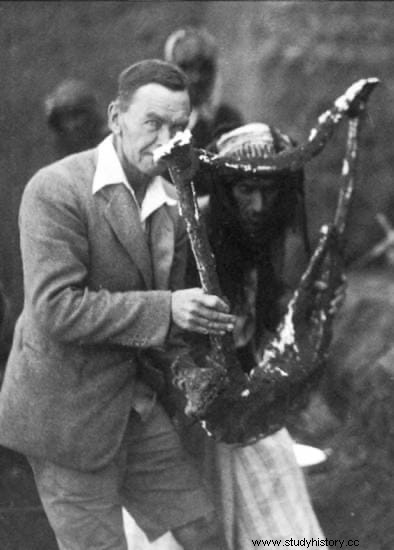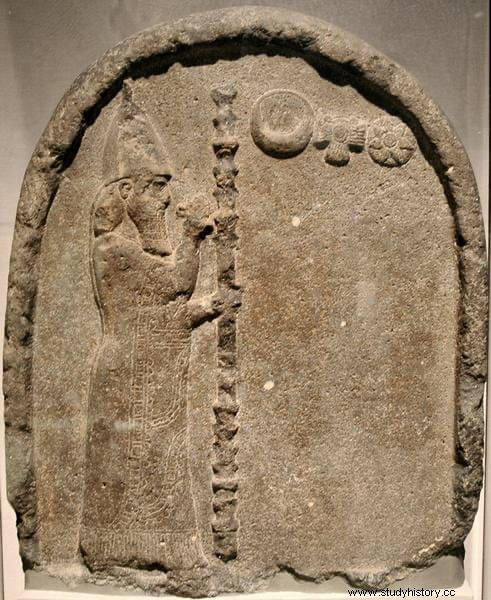We have already spoken on many occasions about the archaeologist Leonard Woolley and the amazing discoveries he made throughout his life:he directed with T.E. Lawrence (Lawrence of Arabia) the excavations of Carchemish, found the statue-biography of King Idrimi, and found the geological evidence of the deluge related in the poem of Gilgamesh.
But what he is best known for is his excavations of the ancient Sumerian city of Ur between 1922 and 1934. The finds made there are one of the most important archaeological events of the 20th century:the royal tombs (2700 BC), the royal standard of Ur or the Copper Bull, among others.

Incidentally, on two occasions, in 1929 and 1930, Agatha Christie visited the digs, where she met her future second husband, Max Mallowan, who was Woolley's assistant archaeologist. And six years later she would publish her novel Murder in Mesopotamia , where the plot revolves around the murder of the wife of the director of the excavations (sadly the inspiration for the character, Katharine, Woolley's wife, would die nine years later of multiple sclerosis, after having collaborated with her husband for 20 years ).
But first, Woolley, Mallowan and Katharine made another sensational discovery. While excavating the palace complex and the temple of Ur, objects and artifacts began to appear in certain rooms, dozens of them, which immediately caught his attention.

For a very specific reason, and that is that they all belonged to different times, some with differences of several centuries. The most recent object was seven centuries older than the building's pavement, and the oldest two millennia older, Woolley himself wrote. Moreover, next to each one there was a small cylindrical clay drum with inscriptions on four columns:the first in ancient Sumerian and the others in three different languages, with explanations about each of the objects, in the manner of modern museums.
The evidence was totally against them getting there by accident Woolley would later write in his famous work Ur of the Chaldeans . And he would add that the room was a museum of local antiquities maintained by Princess Bel-Shalti-Nannar (also known as Ennigaldi-Nanna).

His father, Nabonidus, was not only the last king of the Babylonian Empire reigning between 556 and 539 BC, but he is considered the first archaeologist. It was he who led the first excavations in search of the temples of Šamaš, the sun god, the warrior goddess Anunitu (both located in Sippar), and the sanctuary that Naram-Sin built to the moon god, located in Harran, and after finding them restored them. He was also the first to try to date an archaeological object, although the lack of technology caused him to deviate some 1,500 years.
All the artifacts that Nabonidus found in his investigations came from sites in southern Mesopotamia, dated between 2050 and 1400 BC. (and it is even believed that some may have been previously collected by Nebuchadnezzar II). Circa 550–530 B.C. his daughter gathered the entire collection in a room attached to her palace (the building called E-Gig-Par), creating what many historians consider the first museum in history.

The museum was part of the school for priestesses that Ennigaldi directed, where she used the pieces to teach history, at the same time that she instructed in writing and a dialect called Emesal , used in literary texts exclusively by women.
The school was already eight centuries old when Ennigaldi was appointed priestess of Nannar (god of the Moon) in 547 BC. and she took charge of it.
The remains of the building that housed the museum are just 150 meters southeast of the Ziggurat of Ur, about 24 kilometers southwest of Nasiriyah in Iraq. As for the objects found by Woolley, they are divided between the British Museum, the Museum of the University of Pennsylvania and the National Museum in Baghdad.
